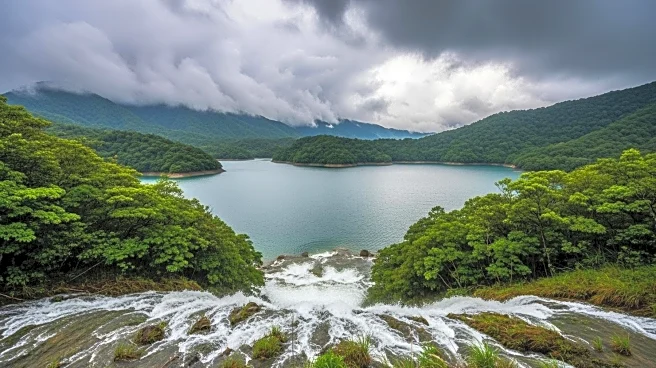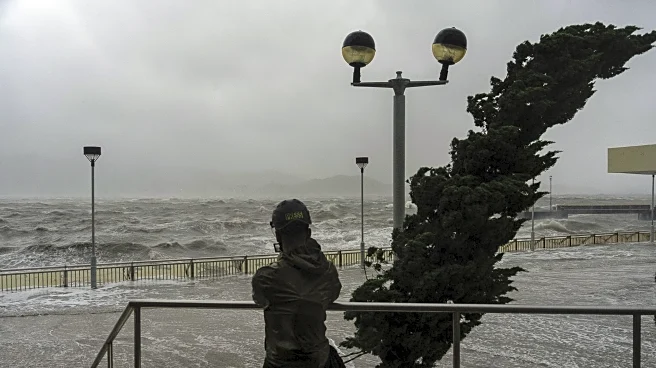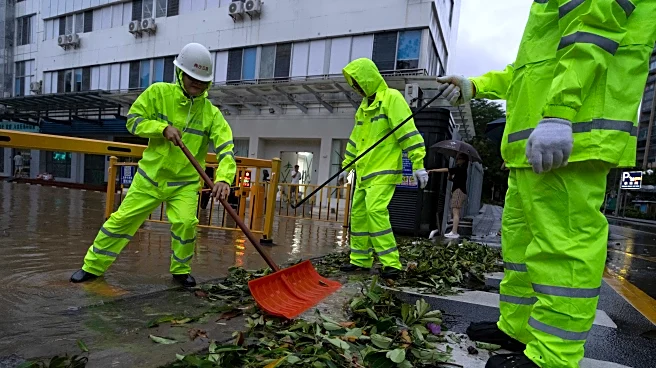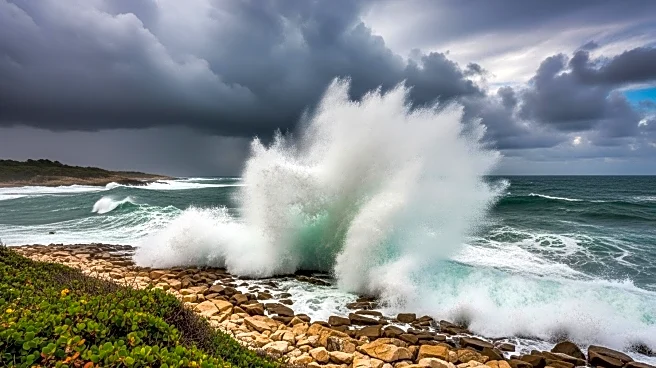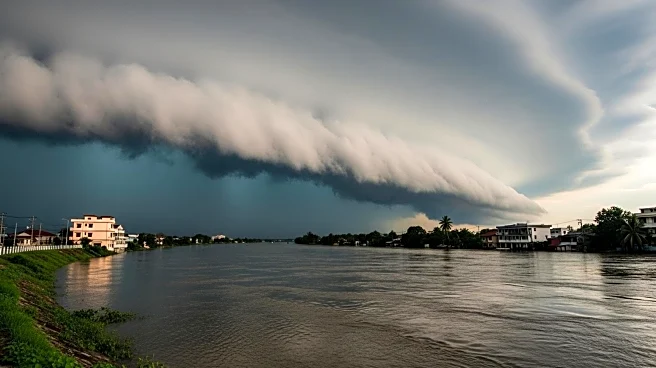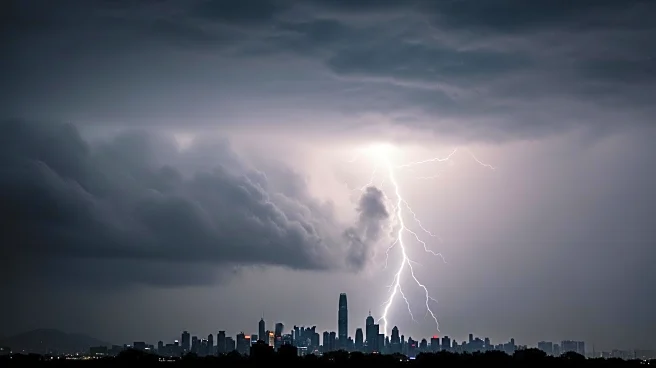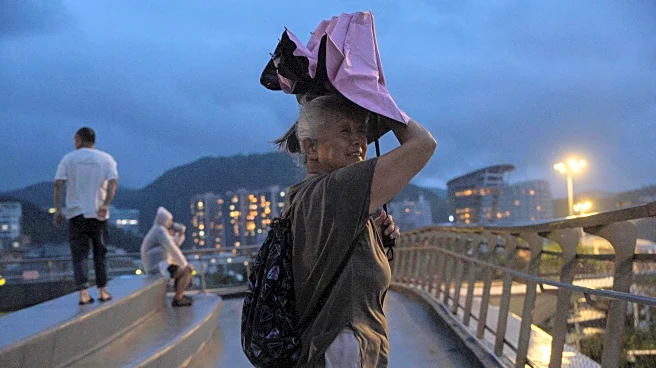What is the story about?
What's Happening?
Super Typhoon Ragasa has caused catastrophic flooding in Taiwan after bursting a mountain lake in Hualien County. The sudden release of water from the Matai'an Creek barrier lake resulted in a deadly flood, killing at least 14 people and injuring 32. The floodwaters, described as having the kinetic energy of a tsunami, swept through Guangfu Township, submerging homes and vehicles. Many residents, particularly the elderly, were caught off guard due to a lack of timely warnings. The disaster has raised concerns about the effectiveness of local emergency response and the need for better communication and evacuation strategies.
Why It's Important?
The flooding in Taiwan underscores the challenges of disaster preparedness in regions prone to natural calamities. The lack of adequate warning and evacuation measures highlights systemic issues in emergency management, particularly in rural and aging communities. The incident also raises questions about infrastructure resilience and the need for improved monitoring of natural barriers like lakes and rivers. As climate change increases the frequency and intensity of such events, Taiwan and similar regions must enhance their disaster response capabilities to protect vulnerable populations and minimize economic losses.
What's Next?
Taiwanese authorities are likely to conduct a thorough investigation into the disaster response failures and implement measures to improve early warning systems. There may be increased investment in infrastructure to withstand extreme weather events and prevent similar incidents. The government could also focus on educating the public about disaster preparedness, particularly in remote and vulnerable areas. International aid and expertise might be sought to bolster Taiwan's resilience against future natural disasters.
AI Generated Content
Do you find this article useful?
